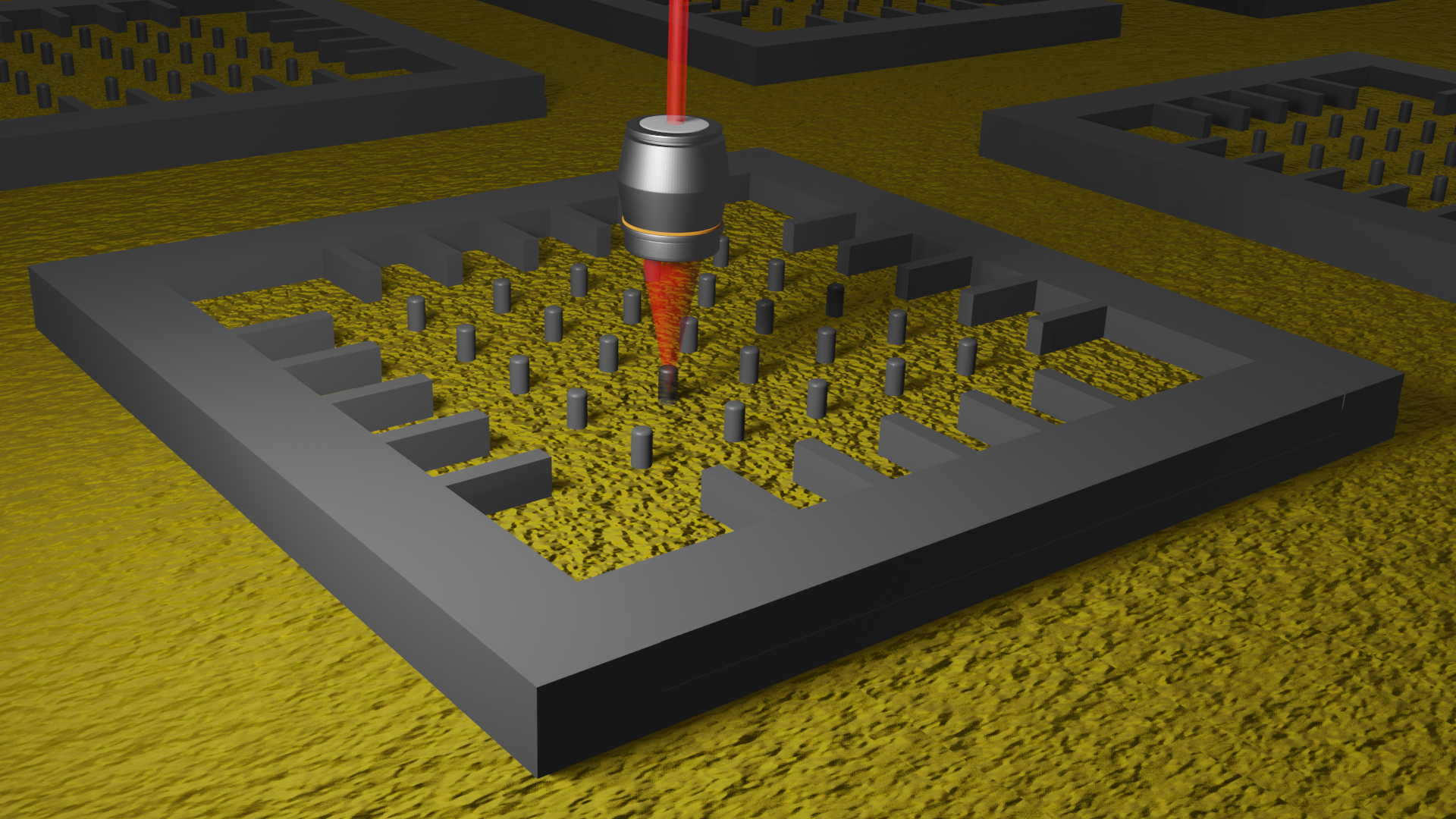Globally, experts are aiming to execute quantum information technologies. One significant path pertains to light: single light packages, also referred to as photons or light quanta, could convey data that is coded as well as efficiently tap-proof.

The researchers use an objective lens to test the light output from an array of silicon nanopillars on a chip. Image Credit: Helmholtz-Zentrum Dresden Rossendorf/Juan Baratech.
New photon sources are necessary that release single light quanta in a regulated manner – and on request. Only of late has it been discovered that silicon is capable of hosting sources of single-photons with features ideal for quantum communication. Thus far, little research has been published on how to incorporate the sources into advanced photonic circuits.
A team of researchers led by Helmholtz-Zentrum Dresden-Rossendorf (HZDR) has, for the first time, demonstrated a suitable production technology utilizing silicon nanopillars, a chemical etching technique, which is then followed by ion bombardment.
Silicon and single-photon sources in the telecommunication field have long been the missing link in speeding up the development of quantum communication by optical fibers. Now, we have created the necessary preconditions for it.
Dr. Yonder Berencén, Study Lead, Institute of Ion Beam Physics and Materials Research, Helmholtz-Zentrum Dresden Rossendorf
While single-photon sources have been created in materials such as diamonds, only silicon-based sources can produce light particles at the precise wavelength to proliferate in optical fibers – a significant benefit for useful purposes.
The scientists accomplished this technical innovation by selecting a wet etching method—metal-assisted chemical etching (MacEtch)—instead of the traditional dry etching methods for processing the silicon on a chip. These typical approaches, which allow the formation of silicon photonic structures, use extremely reactive ions.
These ions trigger light-emitting flaws as a result of the radiation damage in the silicon. However, they are arbitrarily distributed and overlay the preferred optical signal with noise. On the other hand, MacEtch does not produce these flaws—rather, the material is chemically etched away under a type of metallic mask.
My dream is to integrate all the elementary building blocks, from a single photon source via photonic elements through to a single photon detector, on one single chip and then connect lots of chips via commercial optical fibers to form a modular quantum network.
Dr. Yonder Berencén, Study Lead, Institute of Ion Beam Physics and Materials Research, Helmholtz-Zentrum Dresden Rossendorf
The Goal: Single Photon Sources Compatible with the Fiber-Optic Network
Using the MacEtch technique, scientists originally created the most basic form of a possible light wave-guiding structure: silicon nanopillars on a chip. They then blitzed the completed nanopillars with carbon ions, in the same way as they would with a huge silicon block, and thus produced photon sources implanted in the pillars.
Using the novel etching method means the size, surface density, and spacing of the nanopillars can be precisely regulated and tweaked to match advanced photonic circuits. Per square millimeter chip, thousands of silicon nanopillars transmit and bundle the light from the sources by regulating it vertically via the pillars.
The diameter of the pillars was varied by the scientists.
We had hoped this would mean we could perform single defect creation on thin pillars and actually generate a single photon source per pillar. It didn’t work perfectly the first time. By comparison, even for the thinnest pillars, the dose of our carbon bombardment was too high. But now it’s just a short step to single photon sources.
Dr. Yonder Berencén, Study Lead, Institute of Ion Beam Physics and Materials Research, Helmholtz-Zentrum Dresden Rossendorf
Journal Reference
Hollenbach, M., et al. (2022) Metal-assisted chemically etched silicon nanopillars hosting telecom photon emitters. Journal of Applied Physics. doi.org/10.1063/5.0094715.